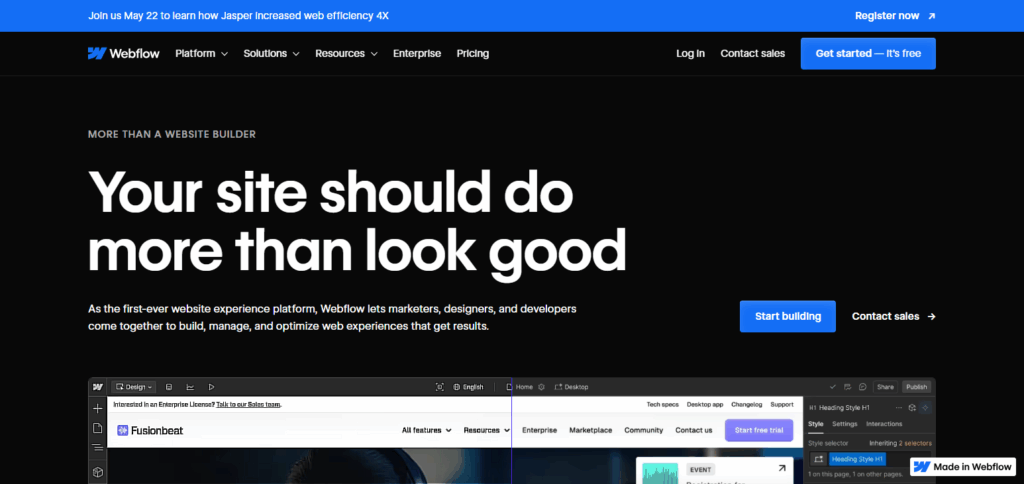In this piece, I will discuss the How to Build a Tech Portfolio that displays your skills, projects, and experience.
As a developer or designer, or even as someone interested in technology, having a balanced portfolio goes a long way in helping you land jobs in a competitive professional environment.
You will understand how to create, arrange, and advertise your work in an optimal professional manner.
What is Tech Portfolio?
A tech portfolio is a self curated compilation of documents that display your work including your skills and projects. It acts as a CV for professionals in software development, web design, data science, and engineering.

A comprehensive tech portfolio serves trust through various real world examples including coding, app creation, and detailed case studies. This collection allows employers and clients to gauge a candidates imagination and skills which is key for finding a job, contracting, or advancing one’s career in technology.
How to Build a Tech Portfolio

Example: Create a Portfolio as an AI & Blockchain Developer
Suppose you want to market your abilities as an AI and Blockchain Development Portfolio. You can tailor your portfolio as follows:
Establish Your Interests
- Focus on AI cryptocurrency analytics and security within decentralized finance (DeFi).
- Emphasize on scalability solutions for blockchain and projects on privacy-centric trading bots.
Construct Your Portfolio Website
- Build a webpage using WordPress or host on GitHub Pages.

- Make sure it has a responsive design and is easy to navigate.
Highlight Important Projects
- Bitcoin AI Trading Bot – Show code alongside trading algorithms.
- Authentication of NFTs – Describe smart contracts and their role in securing processes.
- Crypto Portfolio Tracker – Explain its advantages and unique features.
Insert Technical and Case Studies
Describe the problems, the solution proposed, and the end results for the project.
Show architecture diagrams, code samples, and demonstration videos.
Ensure to Add a Blog Section
Discuss ideas such as writing about AI applications in DeFi, blockchain privacy issues, and security in smart contracts.
Write guides or explain the processes behind new tech and programming languages.
Association with Social & Networking Websites
- Integrate GitHub, LinkedIn, and Twitter links for professional exposure.
- Participate in industry forums and communities to display skills.
Maintain Up-to-Date Records & Publicize Work
- Maintain a record of new projects and accomplishments and add them regularly.
- Post the portfolio link in communities focused on cryptography, blockchain technology, and artificial intelligence.
Other Place Where to Build a Tech Portfolio
Notion
Notion integrates flexibility, simplicity, and customization into a single platform, making it a perfect fit for creating a tech portfolio. You can create visually clean and well-organized pages without requiring any coding skills.

Projects, links, code, videos, and resumes can all be embedded into a single page. Notion’s modular layout is what truly sets it apart- allowing for the easy display of multiple skill sets, categories of projects, or timelines, crafting a uniquely tailored portfolio that aligns with your professional style.
Webflow
Webflow simplifies the design of a tech portfolio due to its ease of no-code development and offering professional design customization. It enables you to create responsive bespoke websites that are polished and run smoothly across all devices.

Webflow, unlike template-based builders, grants you design and interaction control which is beneficial for tech specialists seeking portfolios that stand out visually. In addition, its CMS and hosting simplifies the management and updating of your work over time.
Showcase Your Skills
Every technology portfolio must put focus on the most relevant skills. Make sure to mention the relevant abilities you possess, including the programming languages, frameworks, tools, or platforms that you are skilled at. For ease of reading, you may group them—frontend, backend, databases and such.
Back these skills with real examples from your projects. When applicable, include communication or problem-solving as soft skills too, especially if you have been part of a team working on a project. This illustrates not only knowledge, but also its practical application.
Promote Your Portfolio
After creating your technology portfolio, disseminate it across channels your audience frequents. Share it on LinkedIn, add it to your bio on GitHub, and hyperlink it in your CV and email signature.
Engage in relevant online communities, technical forums, or subreddits to broaden your visibility. If you create written or visual content, make sure to refer back to your portfolio as well. Attending these networking events or hackathons can significantly boost your profile, increasing potential job or freelance opportunities.
Security & Management

Safe Hosting
Selected hosting services should be SSL certified to safeguard client and portfolio information.
Periodic Backups
Configure automated backups to protect data from being lost due to server malfunctions or cyber-attacks.
Maintain Dependencies Updated
To lower security risks, all active plugins, themes, and frameworks must be checked periodically.
User Privileges
Admin accounts require strong passwords and two factor authentication.
Check Responsiveness
Security software coupled with analytic tools should be used to monitor uptime, speed, and suspicious activities.
Pros & Cons
| Pros | Cons |
|---|---|
| Showcases your practical skills | Requires regular updates and maintenance |
| Increases visibility to employers | Time-consuming to create initially |
| Demonstrates project experience | Can be overwhelming to beginners |
| Helps stand out from other applicants | May require web development knowledge |
| Builds personal brand and credibility | Needs constant improvement with new work |
Conclusion
In conclusion, creating a tech portfolio is an impactful method to display your skills, projects and experiences and access potential employers and clients.
Following a systematic approach, ranging from defining objectives to self-promotion, helps create a personal brand which distinguishes you within the industry. An updated, secured and appealing portfolio will foster a positive impression and enhance prospects for career advancement.










